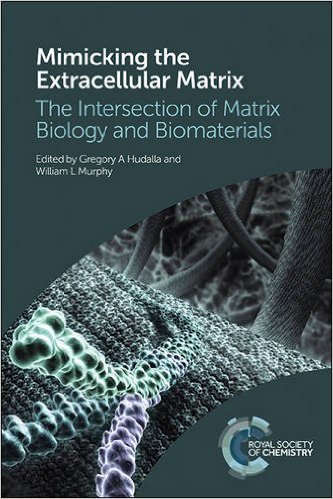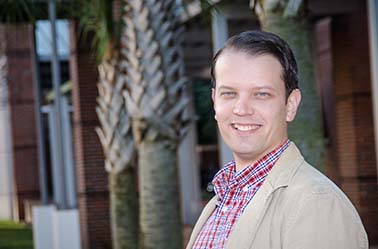A new book entitled “Mimicking the Extracellular Matrix: The Intersection of Matrix Biology and Biomaterials” has been co-edited by University of Florida biomedical engineering professor Dr. Greg Hudalla and Dr. William L. Murphy, a biomedical engineering professor at the University of Wisconsin-Madison. The book is published by the Royal Society of Chemistry (RSC), Europe’s largest organization dedicated to furthering awareness of the chemical sciences.
 Understanding the extracellular matrix (ECM) is both fundamental to basic cell biology research and provides exciting possibilities in tissue engineering and regenerative medicine. This book approaches the extracellular matrix from both basic science and practical engineering perspectives. A broad range of topics are presented as paired chapters, one with a biological approach and its partner with a bioengineering approach. Chapters discussing ECM composition and mechanical properties are paired with chapters surveying state-of-the-art strategies to mimic these features with biomaterials. Chapters outlining organizational characteristics of the ECM, such as spatial patterning, temporal fluctuation, and hierarchical assembly, are then paired with chapters highlighting recent advances in novel chemistries to tailor biomaterial composition in both space and time.
Understanding the extracellular matrix (ECM) is both fundamental to basic cell biology research and provides exciting possibilities in tissue engineering and regenerative medicine. This book approaches the extracellular matrix from both basic science and practical engineering perspectives. A broad range of topics are presented as paired chapters, one with a biological approach and its partner with a bioengineering approach. Chapters discussing ECM composition and mechanical properties are paired with chapters surveying state-of-the-art strategies to mimic these features with biomaterials. Chapters outlining organizational characteristics of the ECM, such as spatial patterning, temporal fluctuation, and hierarchical assembly, are then paired with chapters highlighting recent advances in novel chemistries to tailor biomaterial composition in both space and time.
“This book summarizes the current understanding of relationships between extracellular matrix composition, structure and function, and ongoing efforts to recapitulate these properties using biomaterials,” said Dr. Hudalla. “By summarizing knowledge of matrix biology alongside the state-of-the-art of biomaterials that mimic the extracellular matrix, our intention is to engage biomaterials engineers and matrix biologists in conversations that stimulate future developments in each of these areas.
Dr. Hudalla’s research focuses on creating biomaterials via molecular “self-assembly,” the spontaneous organization of molecules into higher-ordered architectures. His general approach involves developing engineered biomolecules, such as peptides, proteins, carbohydrates and combinations thereof that self-assemble into particles or fibers with nano-scale features. In one example, his lab combines carbohydrates and peptides to create nanofibers that can recognize carbohydrate-binding proteins and modulate their biological activity. In another project, his lab creates complementary recombinant “assembly tags” that organize engineered proteins into multifunctional nanomedicines having modular therapeutic, targeting and diagnostic properties. His long-term goal is to harness self-assembly to create therapeutic biomaterials that interfere with molecular interactions central to pathological processes, such as autoimmunity, viral infection and metastasis.
